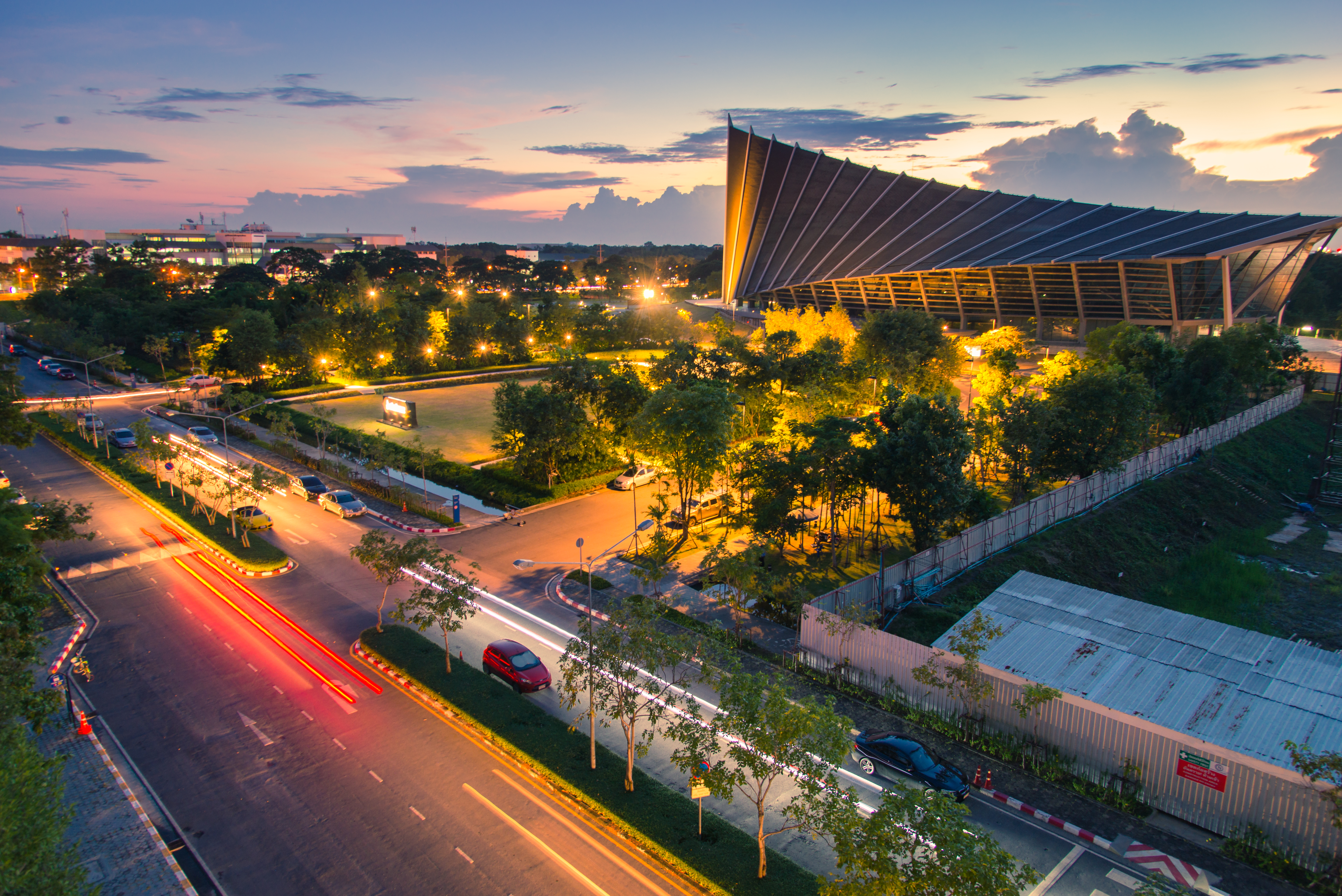The Key Concepts of Mahidol University is Green University to support learning along with nature, integrate the shady environment, consume resources efficiently, and encourage an energy consumption reduction.
The Master Plan of Mahidol University, Salaya Campus, B.E.2551
The Key Concepts of Mahidol University is Green University
The master plan concepts of Mahidol University, Salaya Campus, B.E.2551 is “The University of Dreams” that is a conducive learning environment, physical characteristics that respond harmoniously to social and environmental conditions. The university are like a second home and the spiritual center of all Mahidol people. physical, social and environmental components are an important element to create “A Promise Place to Live and Learn Together with Nature”
- Social is to create a learning community
- Physical is an indoor and outdoor environment that suitable for living and learning
- Environmental is a holistic environment which includes the creative environment, the natural environment and the community around the university.
Green University is a key concept to build the university that promotes nature-based learning and as a botanic garden (Arboretum), which is the main way of university development leading to the university that integrates a shady environment, promote health, clean and pollution-free, valuable use of resources, beautiful landscape, green space for recreation and environmental activities and also, promote renewable energy. As a result, students and Mahidol people will live happily, have a good of life and eco-friendly living in Mahidol Unversity, Salaya Campus. Moreover, the green university development will make Mahidol University, Salaya Campus becomes a community leader in environmental protection and coexistence with nature.
3 Green Strategies for Green University development
- Green 1 Save and Healthy: Enhancing quality of life and a good and safe working environment
- Wide variety of plants, both of native plant, herbal plant and plant for research.
- Increase the number of trees in the university especially around the activity area and walkway.
- Create gardens and landscapes that are unique and suitable for historical, cultural, and architectural areas of Mahidol University, Salaya Campus.
- Improve the polluted environment with technologies such as wastewater treatment system, grey water re-use, recycle waste and reduce air pollution without encouraging the use of cars, burning garbage
- Support tree planting and using bicycles instead of cars.
- Green 2 Green Education and Technology: Support teaching, research, development and technology transfer leading to a green university
- Increase course study related to sustainable development, environmental conservation and long-learning in environmental education.
- Emphasis on science research, conservation, restoration and enhancement of environmental quality.
- Develop innovative processes and new technologies to create environmentally friendly products.
- Develop knowledge in science and technology to protect the environment in the area of Mahidol University and surrounding community areas.
- Green 3 Green Preservation Energy: A well-managed university for efficient use of resources energy efficient maximum benefit as followed;
- Design of energy efficient buildings, use of natural light and reducing the temperature outside the building.
- Reduce energy consumption from fossil fuel, use electric or renewable vehicles
- Support walking and cycling and support the public transport system.
- Add different types of renewable energy alternatives both for transportation and for daily use.
- Reduce the use of electricity such as turning off the lights during the day, reduce air conditioner power consumption and use electrical appliances sparingly.
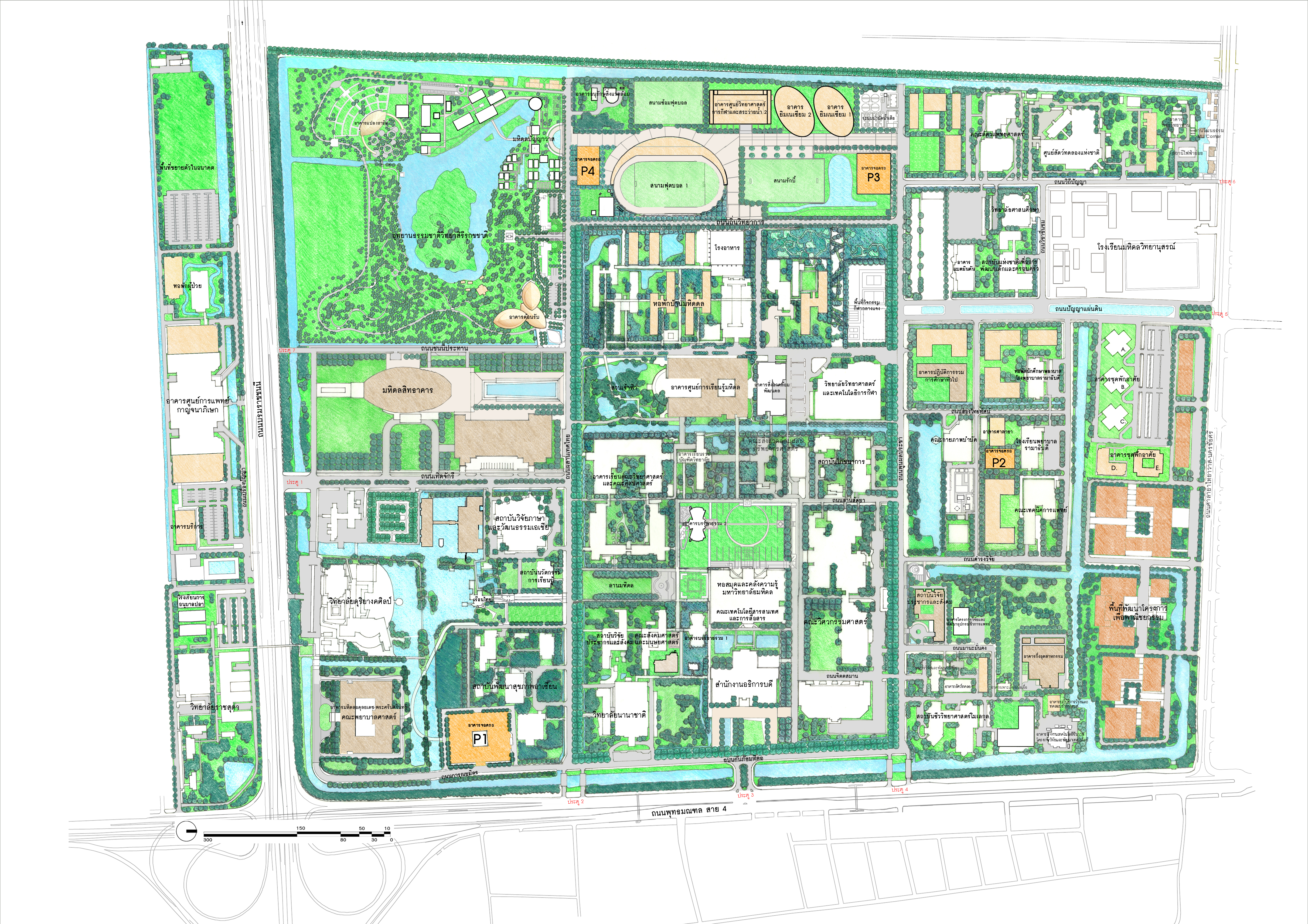
The Master Plan of Mahidol University, Salaya Campus, B.E.2551
The landscape development according to the master plan of Mahidol University, Salaya Campus, B.E.2551
1. The landscape development concept of Mahidol University, Salaya Campus is to create a shady and peaceful landscape and environment, and a learning society. That consists of 3 topics as follows.
- Conservation of green areas rich in diversity of trees, and preserving of each ecosystem to maintain its original nature as much as possible.
- Development of unused areas and green areas for balanced using to use for balanced utilization in activities such as sports, recreation, education, and building and construction.
- Creating the “Green Way Axis” to connect all parts of the university area, and promote the image of an integrated learning area and being with nature.
2. The landscape development of Mahidol University, Salaya Campus
2.1 Main axis of the university (Salaya Campus) is as follows.
- East - West of the Green Way Axis is the main walkway and cycling way within the study zone, this axis connects from the university gate 3 to the road in front of the dormitory and sports center.
- North - South of the Green Way Axis is the main road, walkway and cycling way. This axis starts from the university gate 1 along with the road beside of Prince Mahidol Hall, which connects Thin Wittayakarn Road to Salaya Thaiyawat-Nakhon Chaisri Road.

Green Way Axis Layout of Mahidol University
2.2 Vista, Landmark, and Visual Corridor
Set the vista, landmark, and visual corridor to create a beautiful physical environment in order to be memorable and unique of the university, and to inform about directions and routes as well as creating shady scenery.
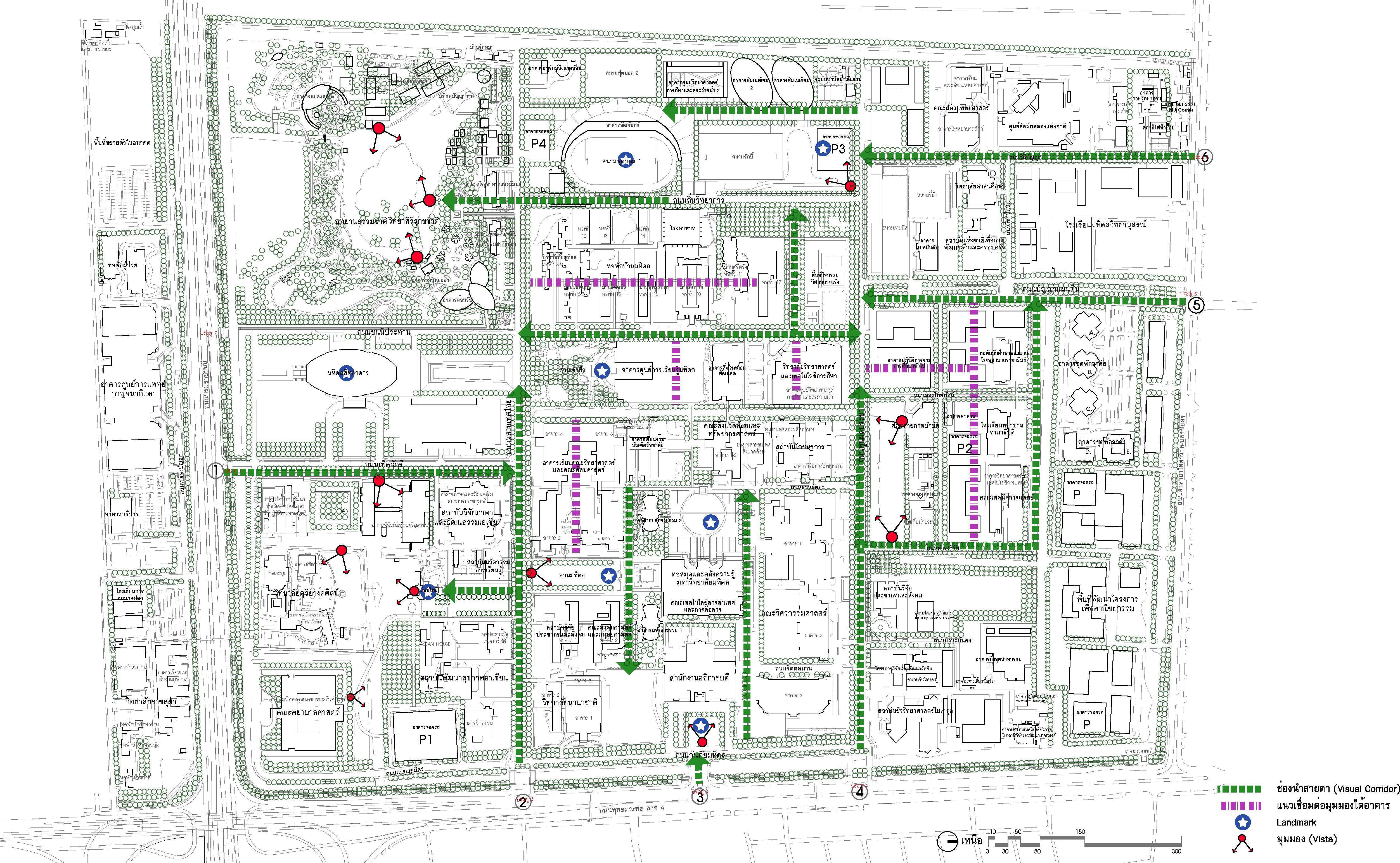
Layout of Vista, Landmark, and Visual Corridor
2.3 Social Activity and Facility Nodes
Designing outdoor spaces to support activities in the university community, encourage the participation and exchange with each other in the community. The characters of activity areas can be divided into 3 types including activity grounds, activity walkways, and service points.
2.4 Green Network
Connecting to the park areas with a green circulation line in the form of a path garden results in a large continuous green area.
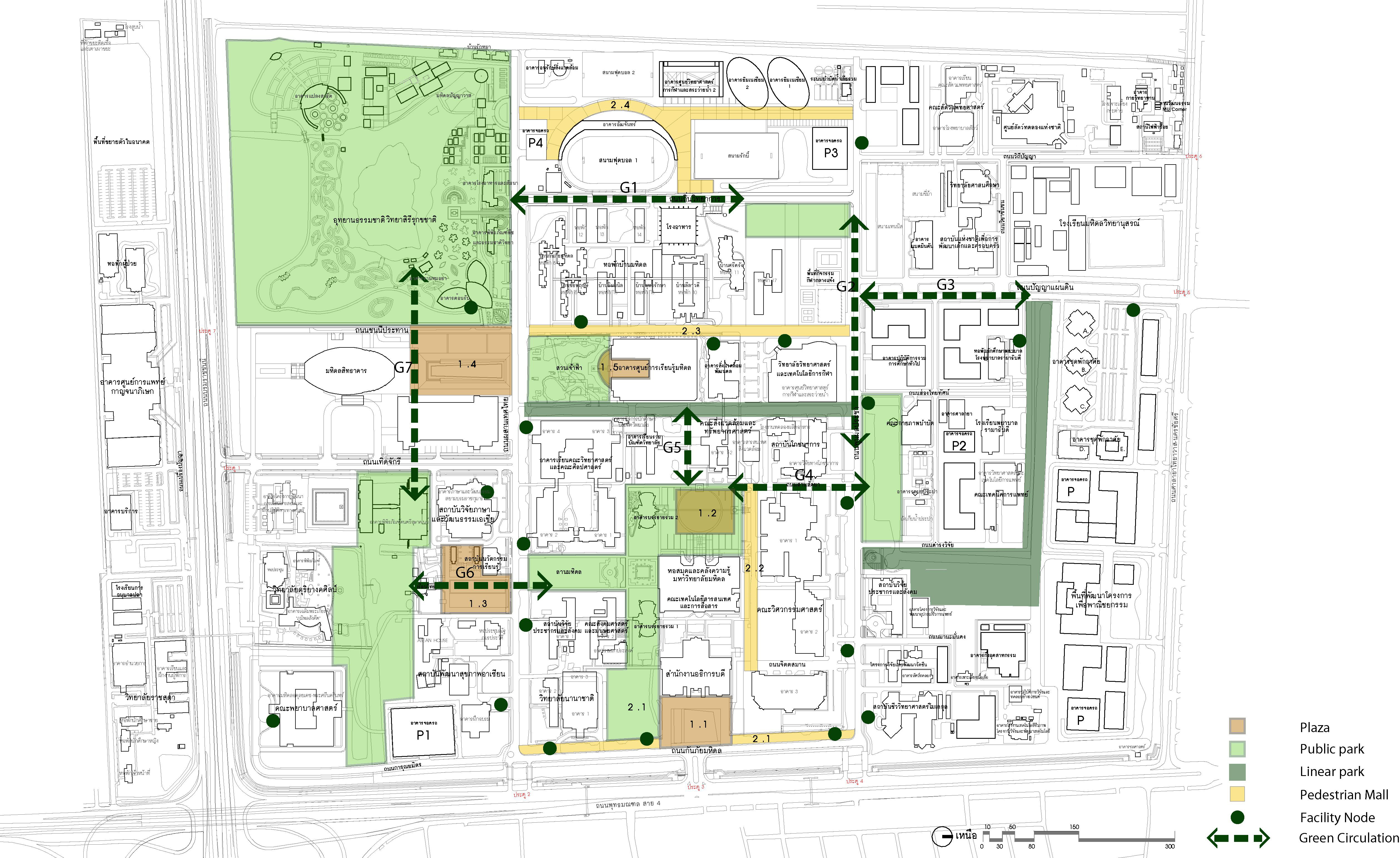
Activity Areas and Green Network Layouts
2.5 Sport and recreation area system
Sport and recreation areas are classified into 4 types including (1) main sport area (2) lawn area for exercise (3) boating pool (4) bicycle lane for relaxation and exercise.

Layout of sport and recreation area
2.6 Planting Use System
Concern over the ecosystem of living organisms at the canopy by linking both existing and new ecosystems to be naturally harmonized with the concept of “Tree Canopy Landscape Ecology” which considers all of 3 tree sizes as perennial, shrub, and ground cover plats.
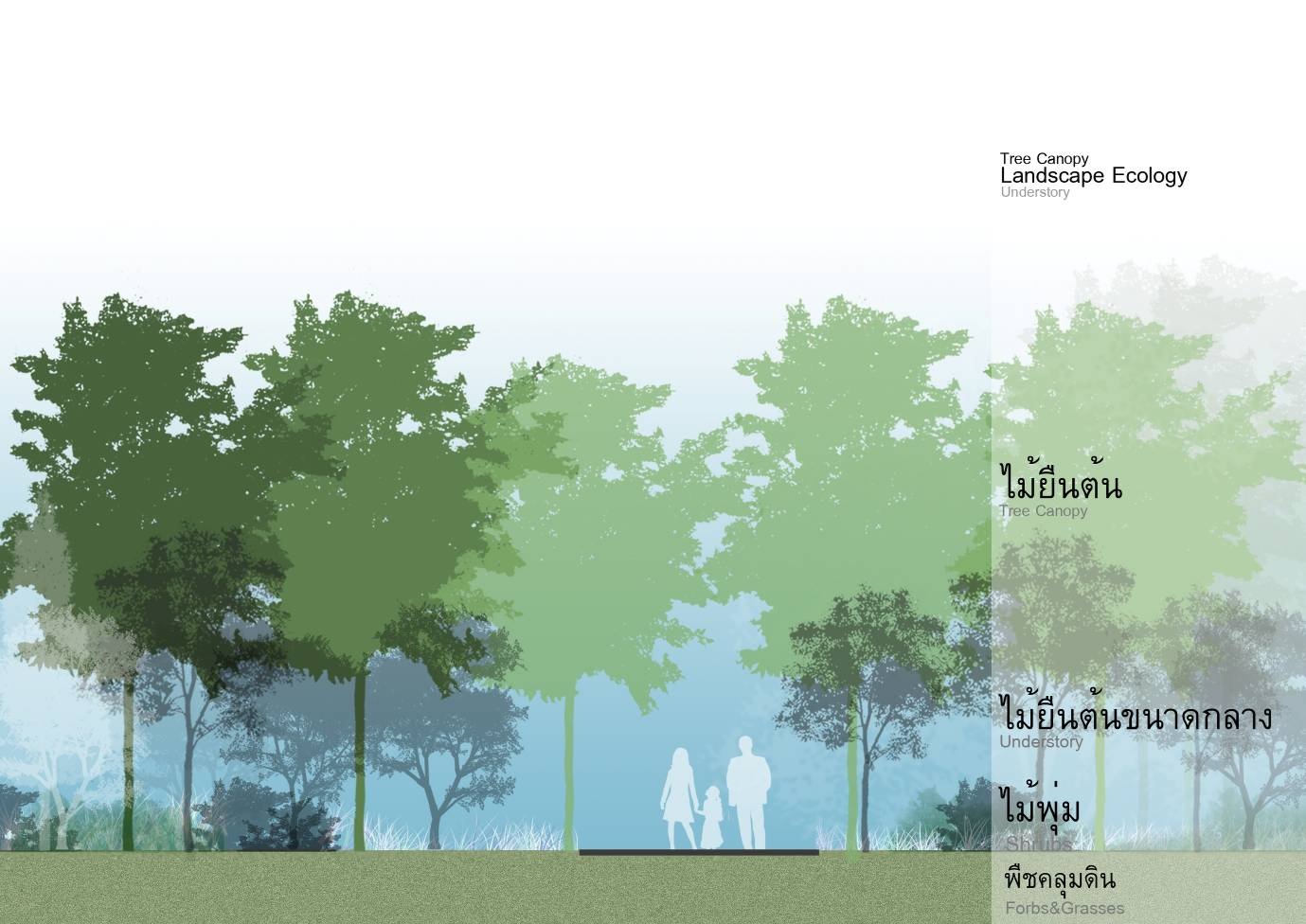
Tree Canopy Landscape Ecology Concept
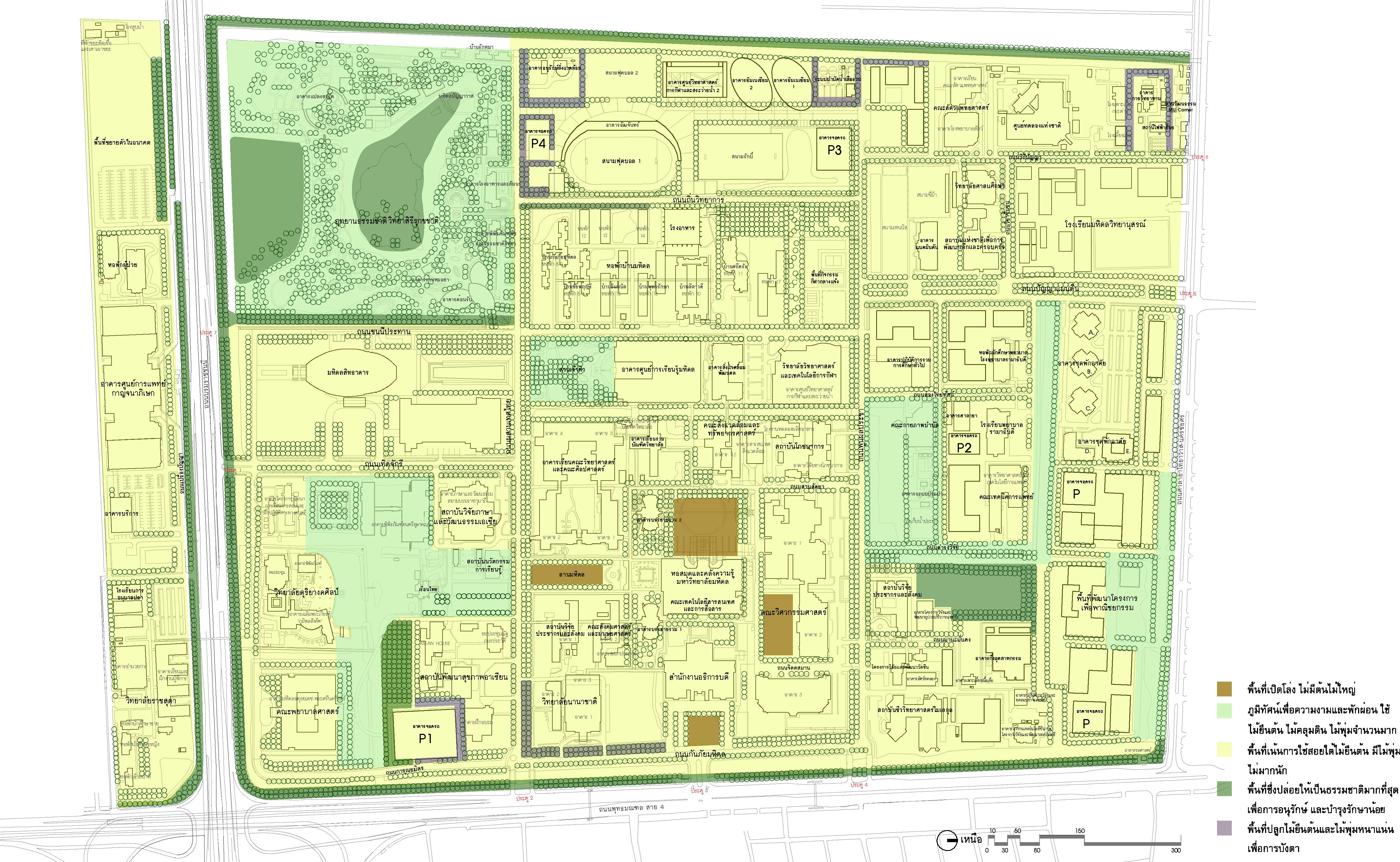
Layout of Planting Use System
2.7 Landscapes Planting Concept
Mahidol University is located in the Humid Tropical Climate Zone. The selection of plant species within the university therefore has specific characteristics based on (1) the importance of each road and (2) the topography of the garden, as well as concerning about climate tolerance and reducing the water consumption. Examples of plants that are planted within the university are Toi Ting (Ruellia tuberosa), Kradoom Thong Law (Sphagneticola trilobata), Canna, Zephyranthes minuta, etc.
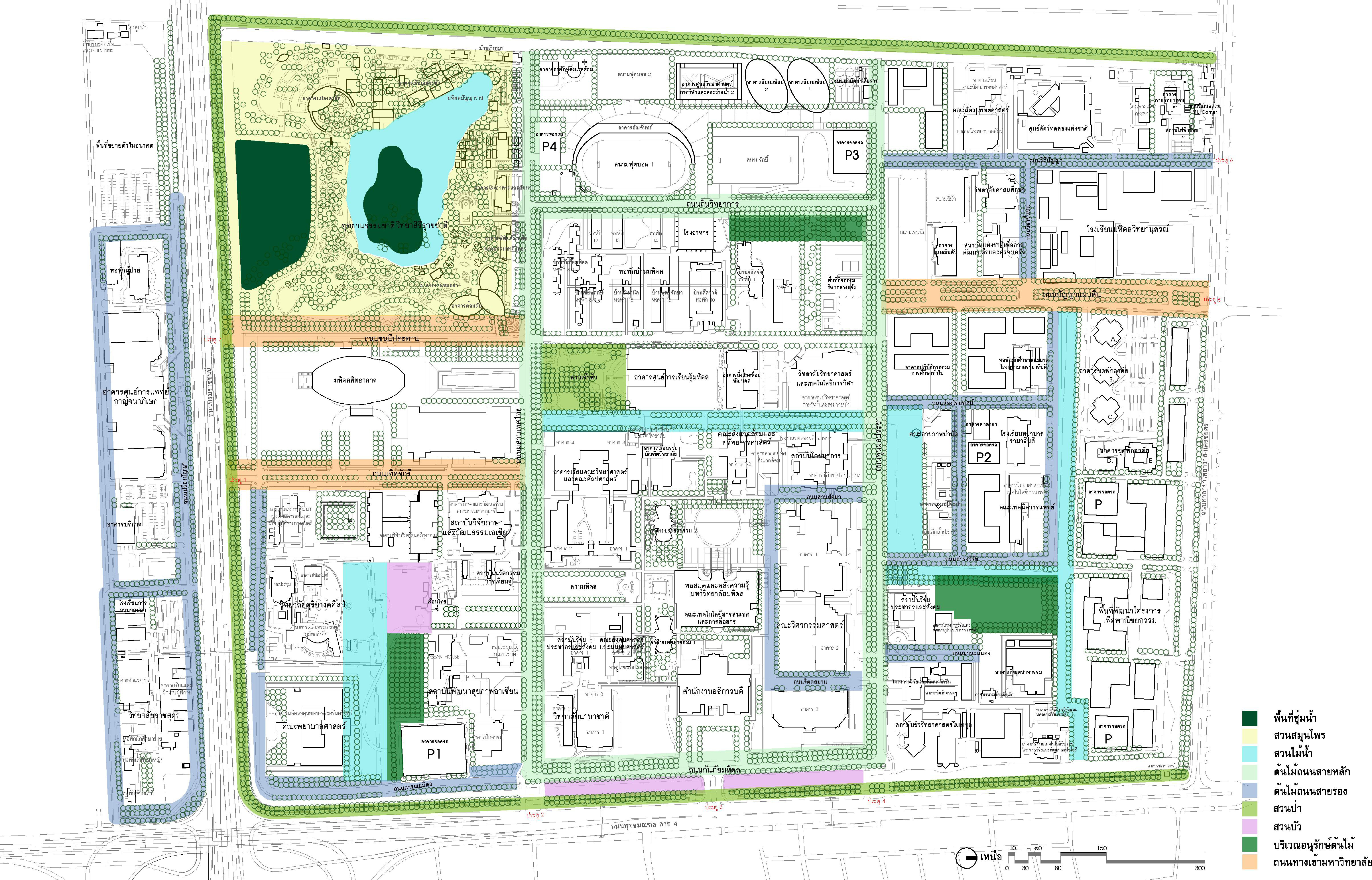
Layout of green area and plants selection
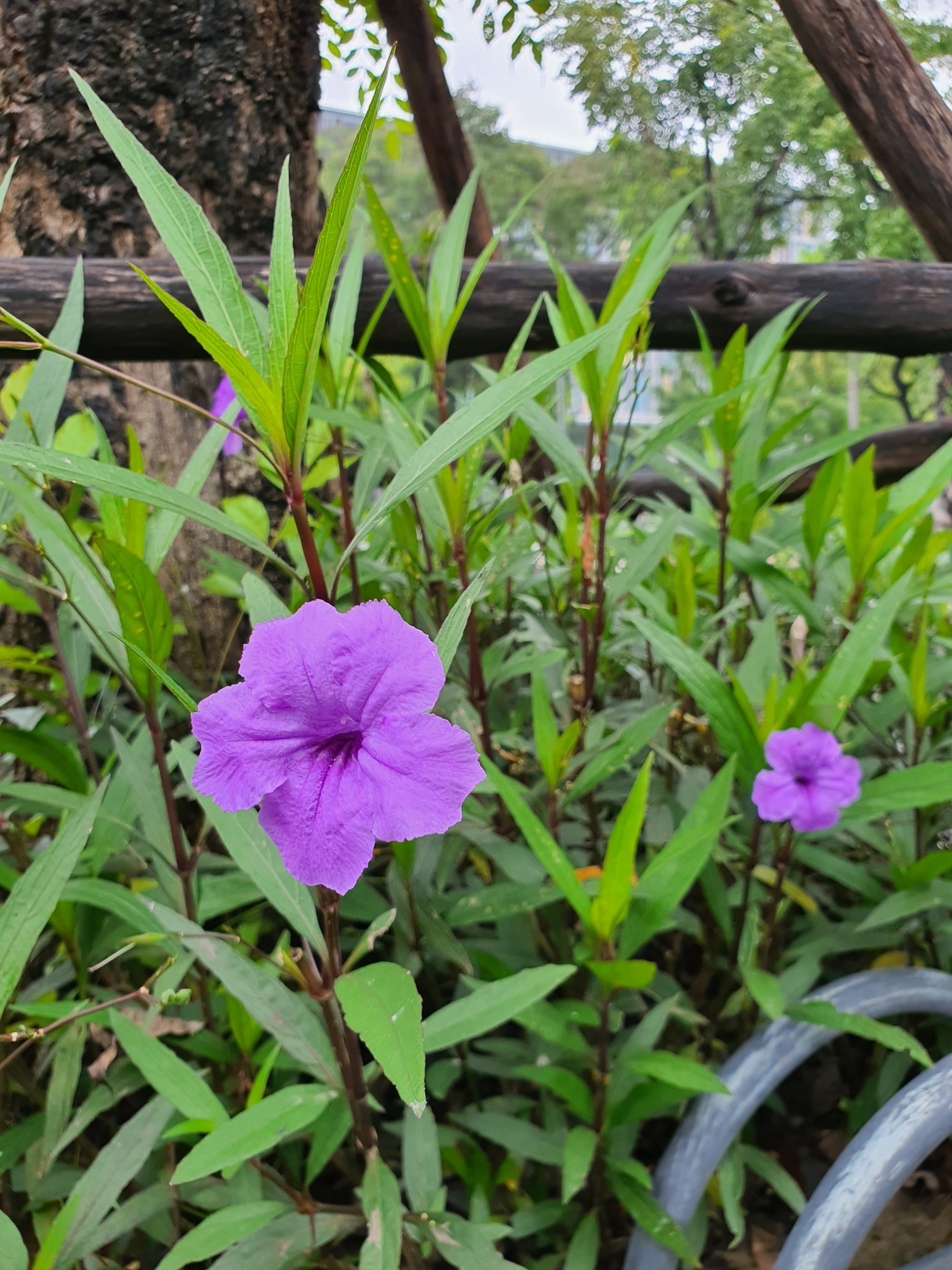 |
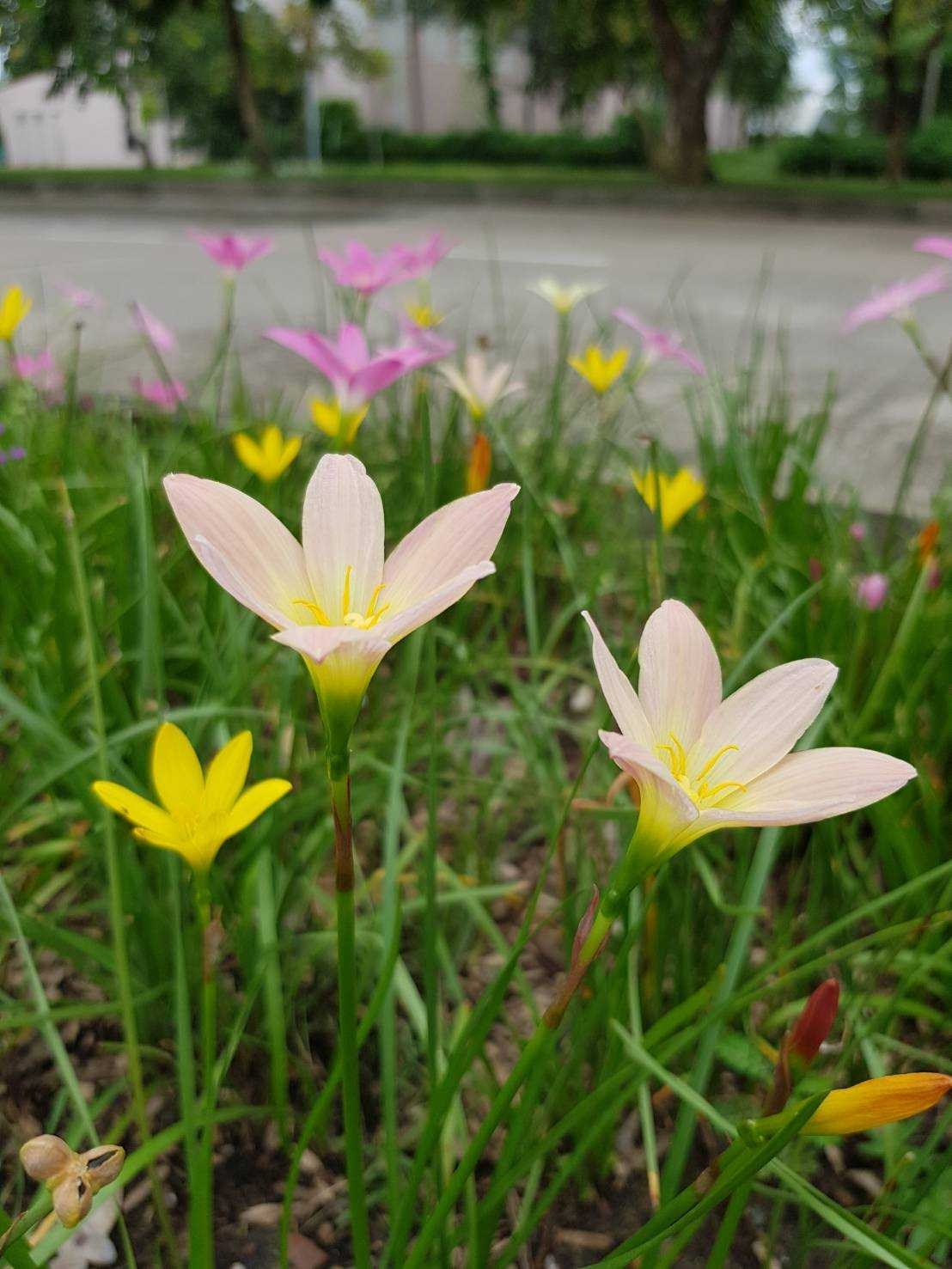 |
| Toi Ting (Ruellia tuberosa) | Zephyranthes minuta |
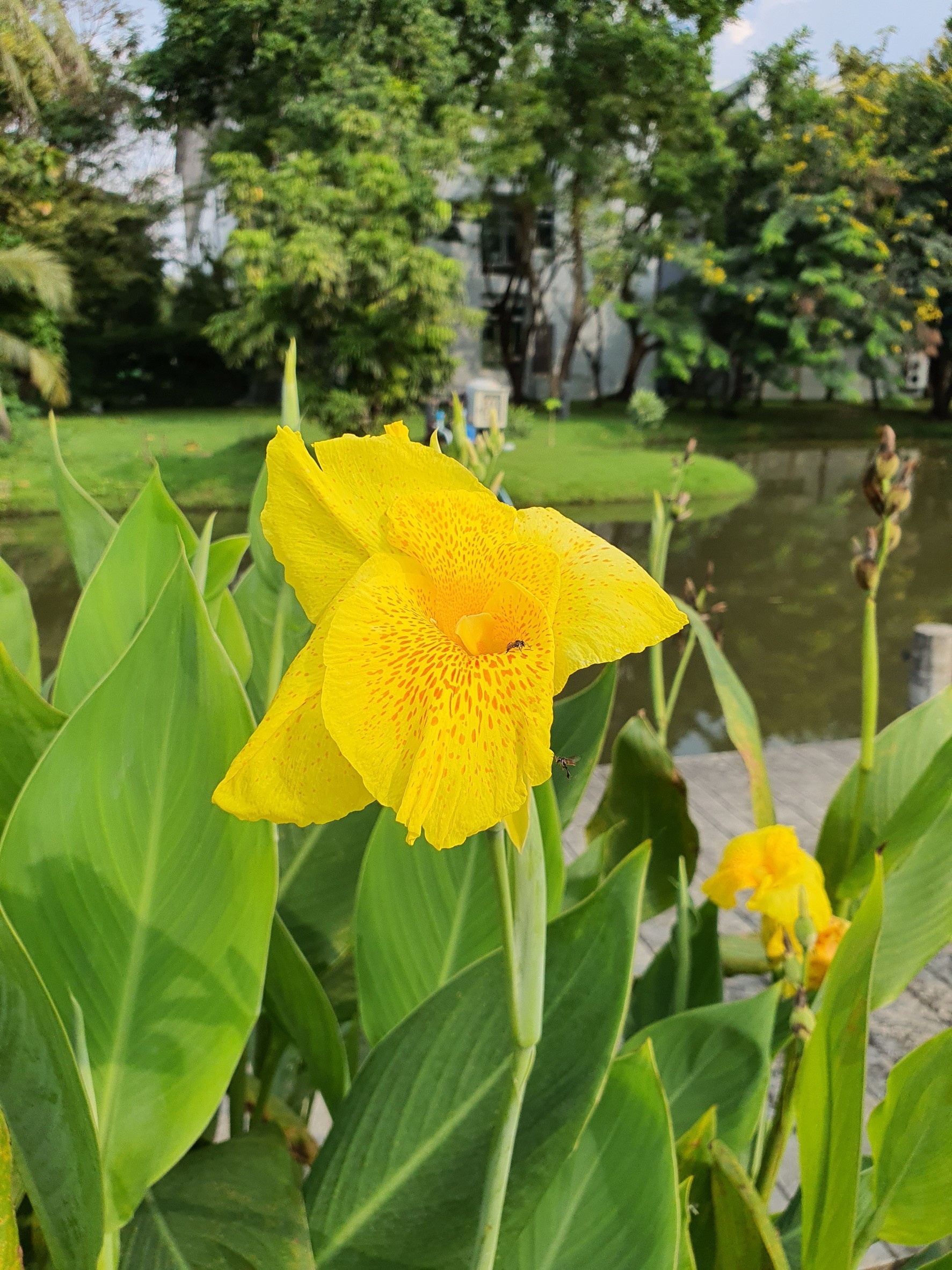 |
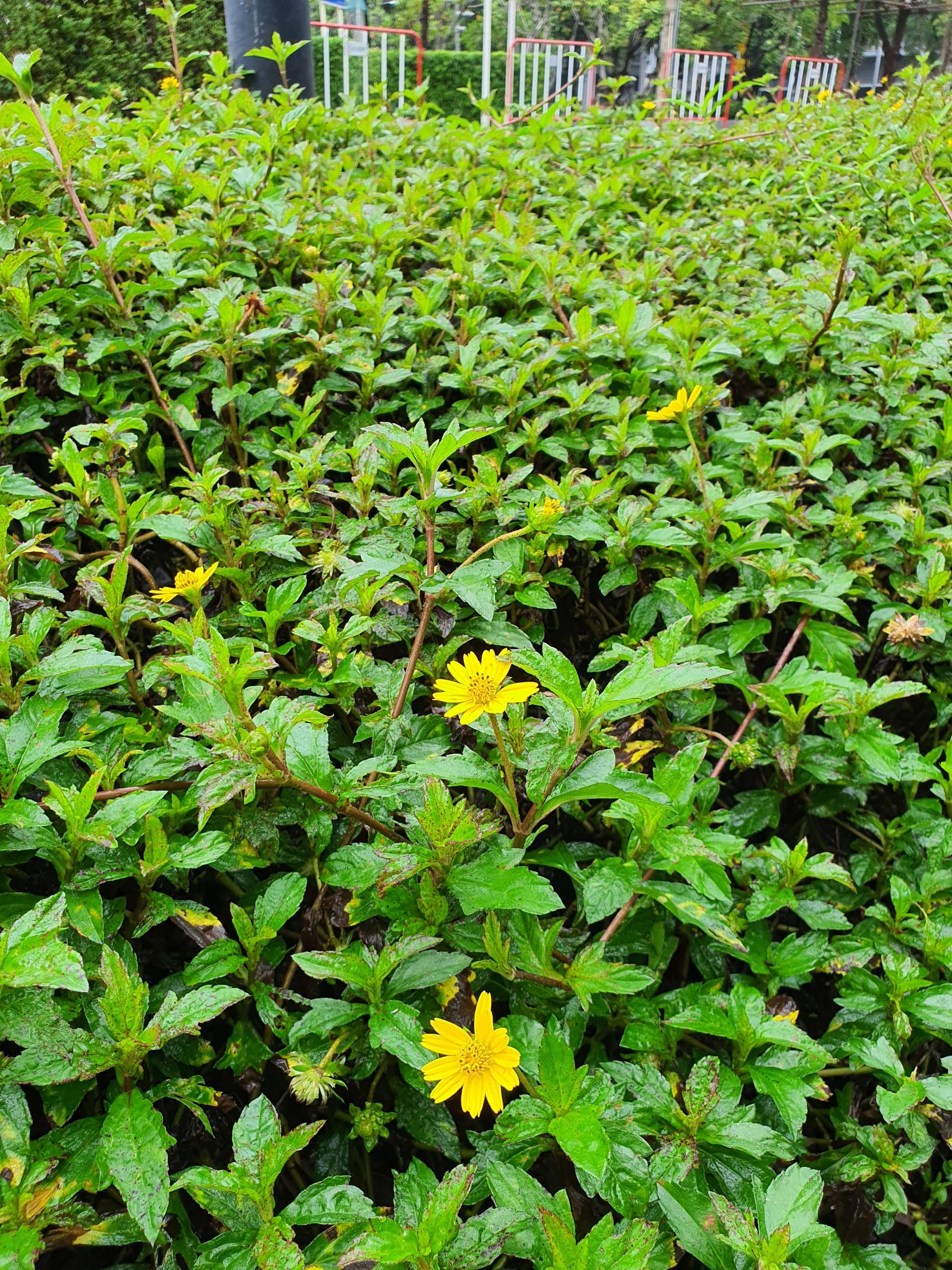 |
| Canna | Kradoom Thong Law (Sphagneticola trilobata) |
Examples of plants
2.8 Lighting Concept
Besides the garden design concepts, consideration of the area used at night time is important which refers to an attractive and usable design. The concept is proper lighting in each area according to the landscape architecture standards mentioned in the master plan.
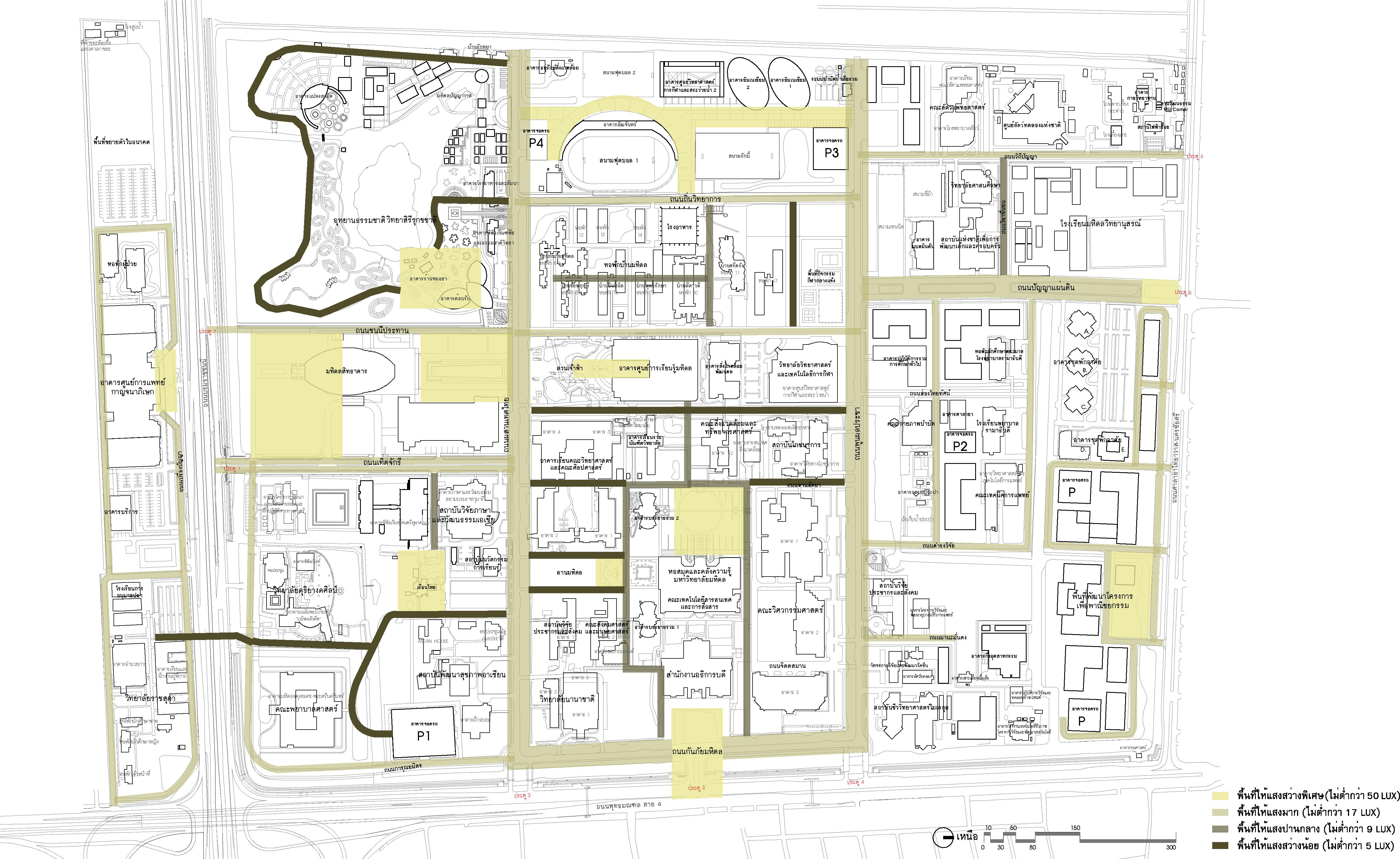
Layout of lighting system in campus landscape
Development of transportation system
1. Concepts for the development of traffic systems
Development of road, parking lots, bicycle lane, and pedestrian in accordance with the Green University concept, consisting of safety, tidiness, environmentally sound, and community satisfaction. The development concepts are as follows.
1) Converting a university that emphasizes car traveling to walking and cycling by reducing the main road to be 3 lanes without a road median, changing the other original road lanes to become pedestrian and bicycle lane with a shady landscape.
2) Provide the roads for car traveling cover the new developed areas as necessary.
3) Control the car traveling routes outside the educational zone to be reserved for walking and cycling area to ensure safety, shady and close to nature in the educational zone.
4) Construction of a parking building and adjusting the original parking area to be green areas to support activities of students and staff.
5) Emphasized public transport, walking, and cycling in the university.
2. Road and parking system
2.1 Transportation network is classified as follows.
• Seven main roads are served as entrance-exit and the main route to connect any areas within the university.
• Ten minor roads are served as roads that connect the main roads into any faculties and departments.
• Connecting roads in the faculty or department.
• Pedestrian and limited hours serviced roads.

Layout of main and minor roads
2.2 Accessing and route directions
There are 7 entrance-exit gates to the university.
2.3 Car parking systems
Proposed to build 4 parking buildings to service approximately 2,000 cars in the future, along with the development of a mass transit system to transport car users to any areas. Construction of a temporary parking lot while waiting for the construction of parking buildings.
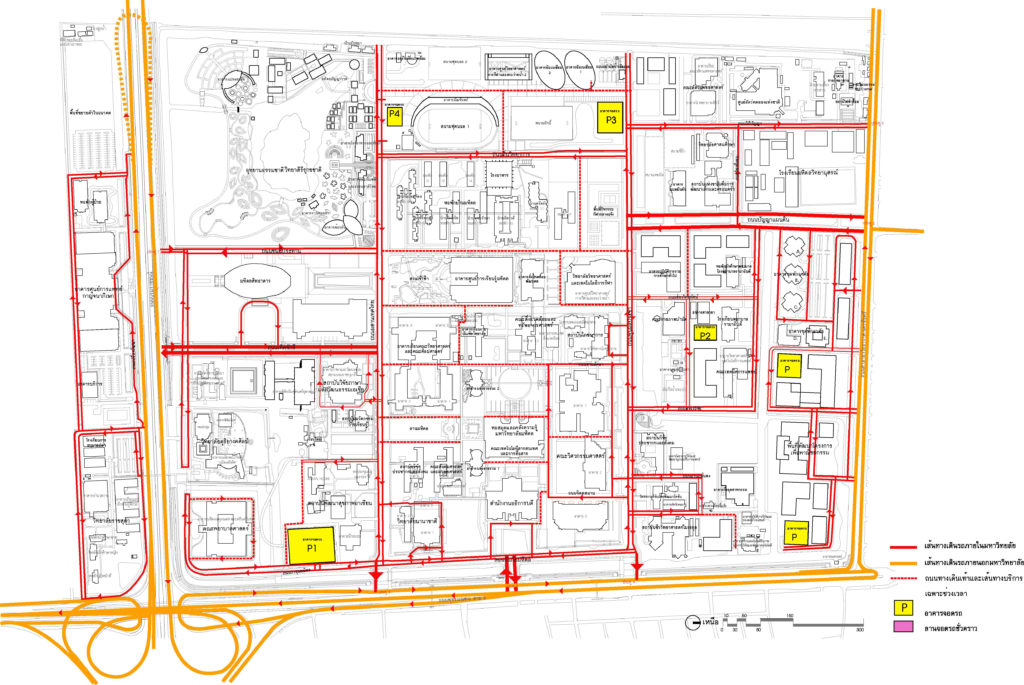
Layout of roads, car routes, and parking buildings
2.4 Bicycle route and bicycle parking system
Main and minor bicycle routes are parallel to the pedestrian. However, these routes are separated from the pedestrian to ensure safety and shady. That encourages more bicycles use.
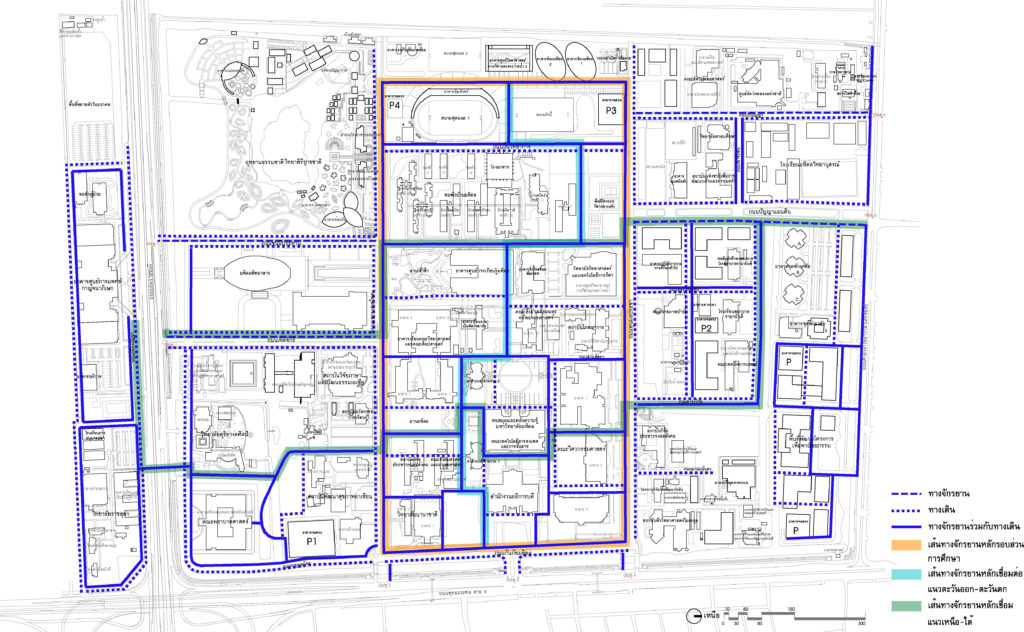
Layout of bicycle routes
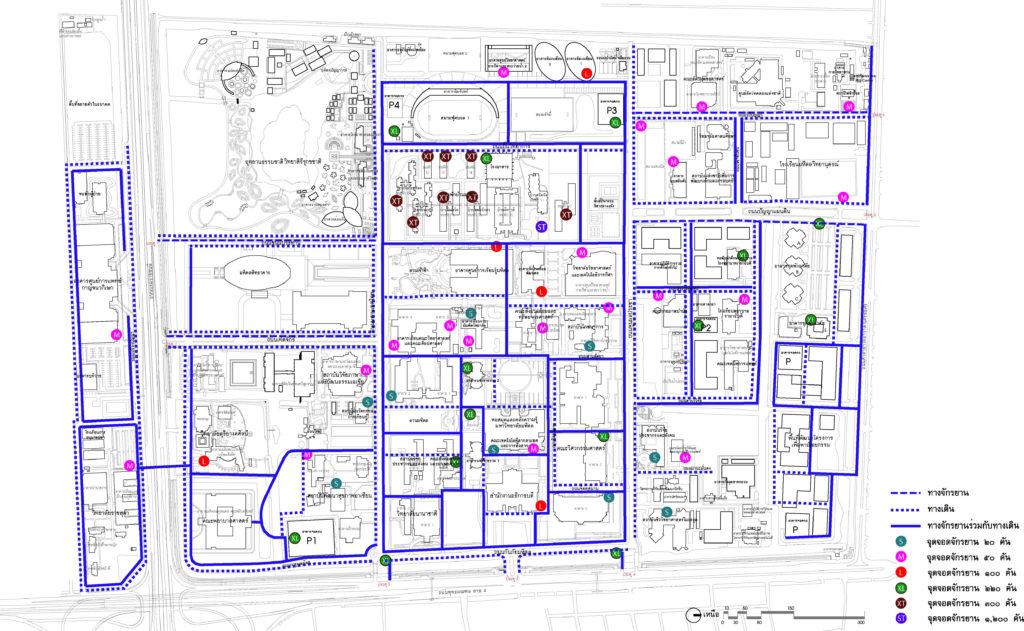
Layout of bicycle routes and bicycle parking
2.5 Pedestrian system
The function of the pedestrian is defined based on activities and connecting to the landscape system. That considers convenient access, safety, and being part of nature.
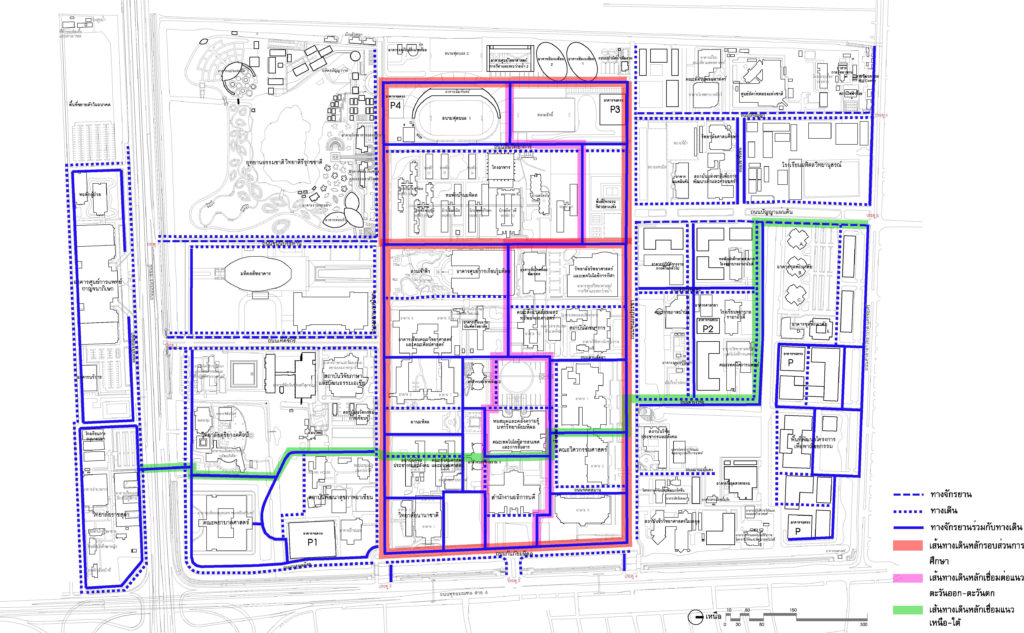
Layout of pedestrian system
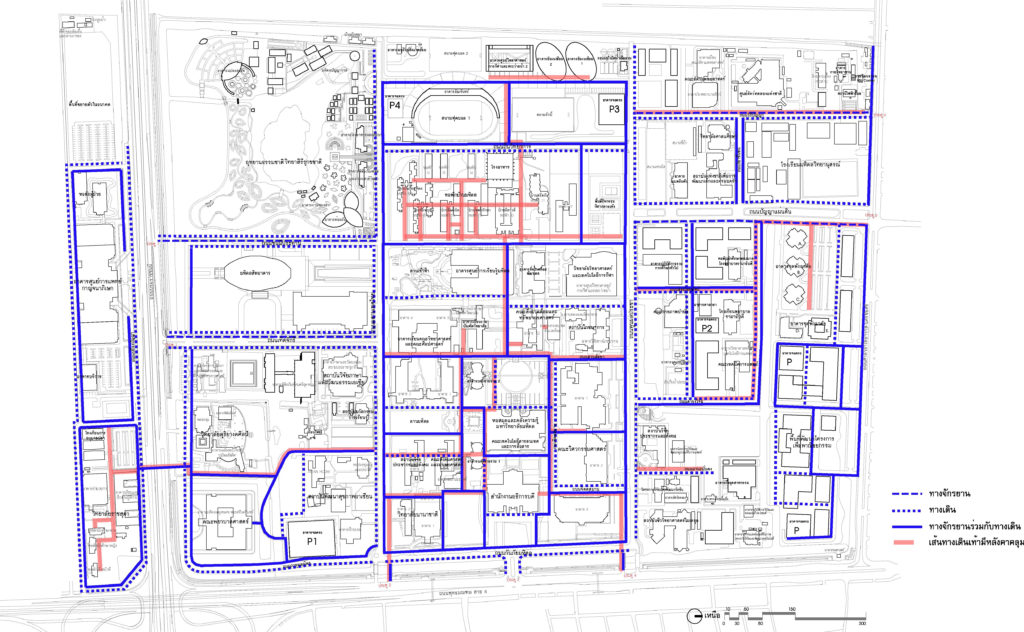
Layout of covered pedestrian walkway
3. Size of road
The development of transportation system in the university according to the Master Plan of Mahidol University, Salaya Campus, B.E.2551 has determined the size of main roads, minor roads, serviced roads in the faculty or department.
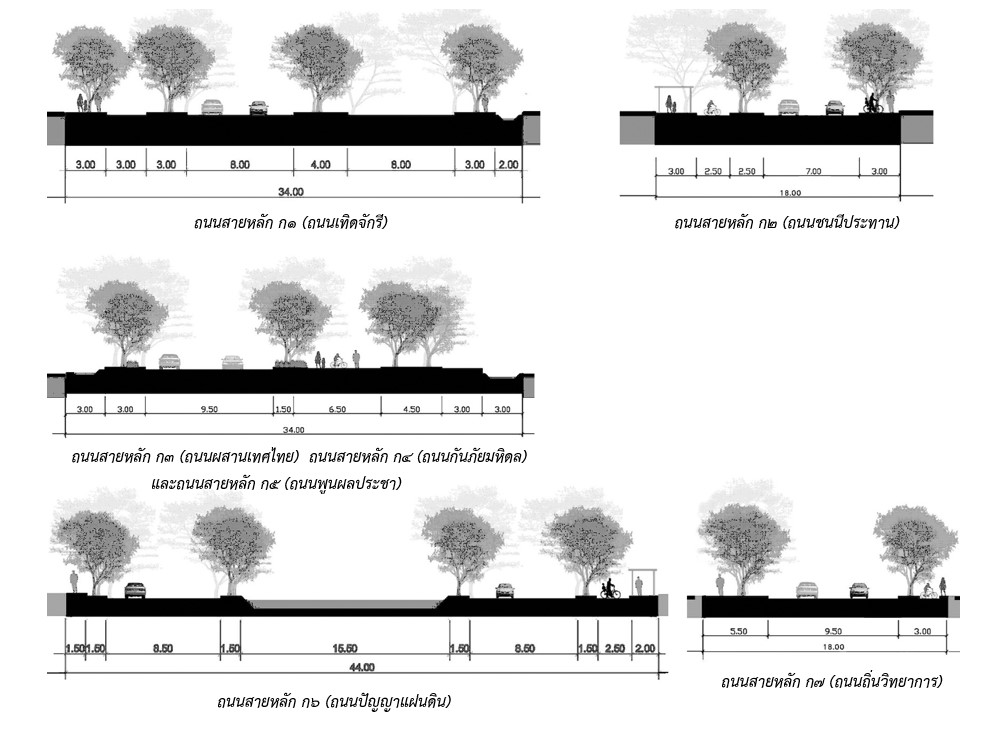
Figure showed the size of roads
4. Shuttle bus system
The main idea of the university’s public transportation is to reduce car traveling together with encourage walking and cycling.

Layout of public transportation
Development of utility system
Development of utility system includes electric power system, sanitation system, service center, communication system, waste management system, and drainage system to support future area development. That considers reduction of energy consumption, environmental conservation, and efficient resources consumption, to be an example to the community.
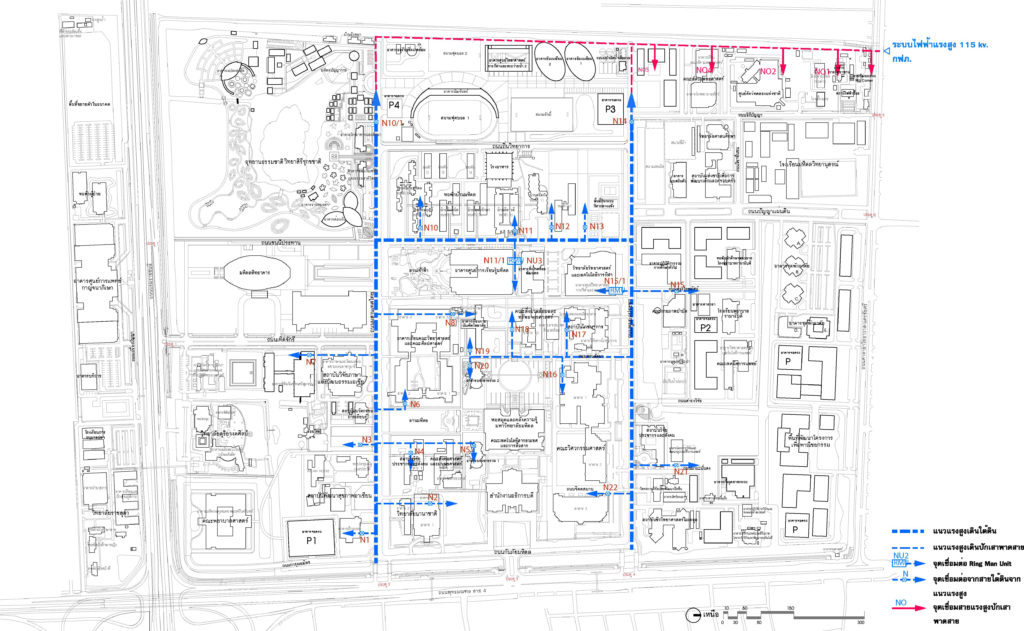
Layout of electrical system
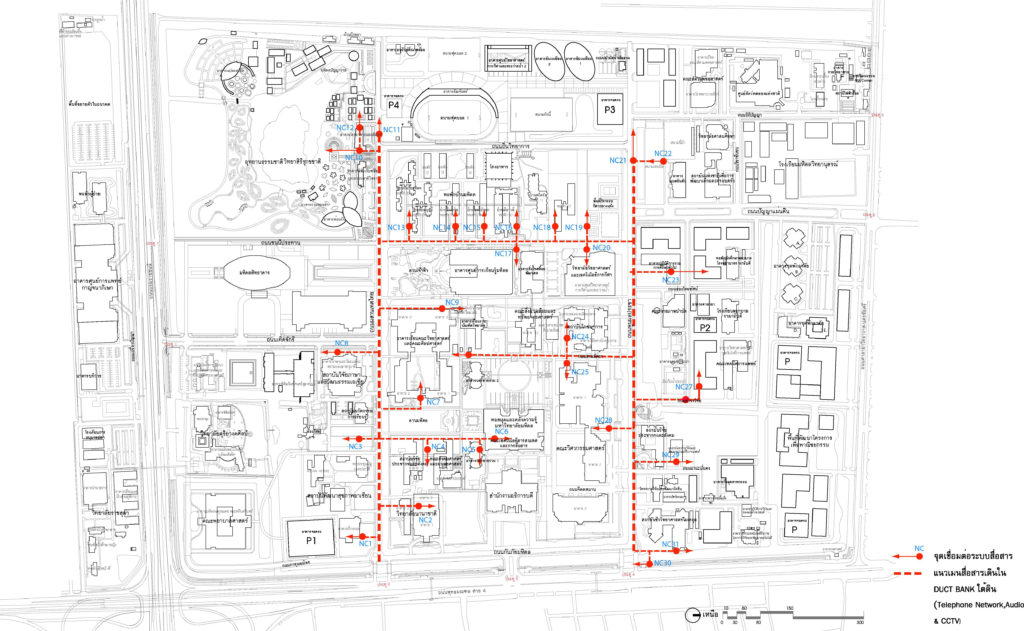
Layout of main DUCT BANK of communication system
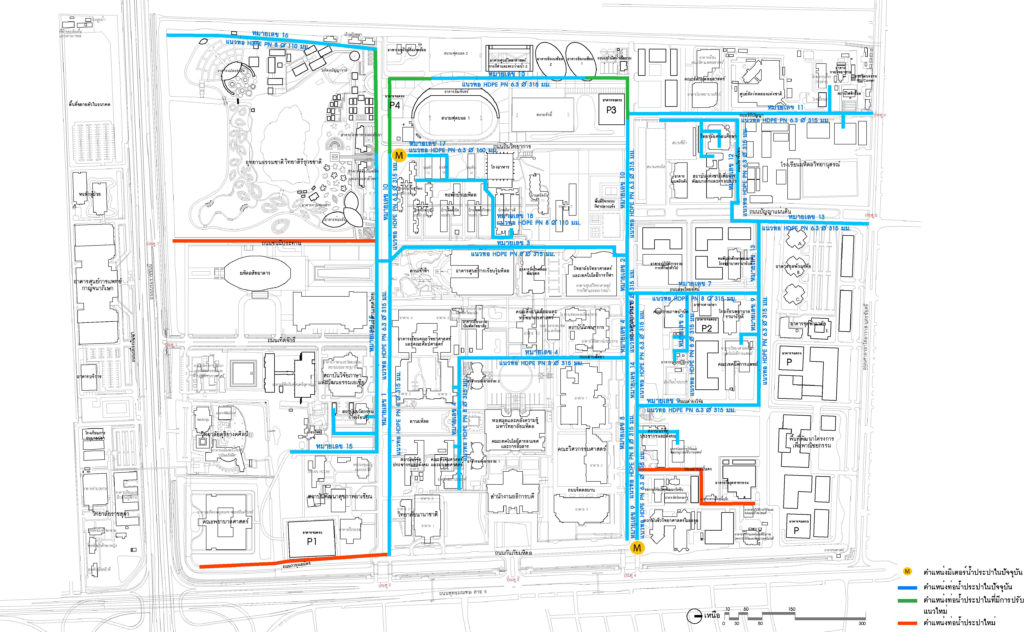
Layout of water supply pipe system
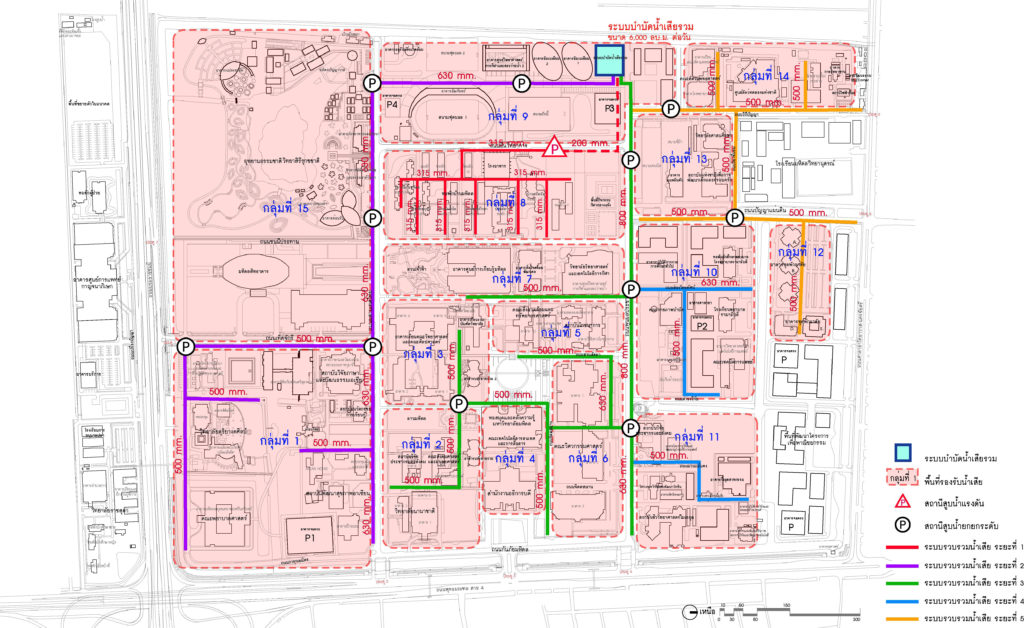
Layout of wastewater collection system
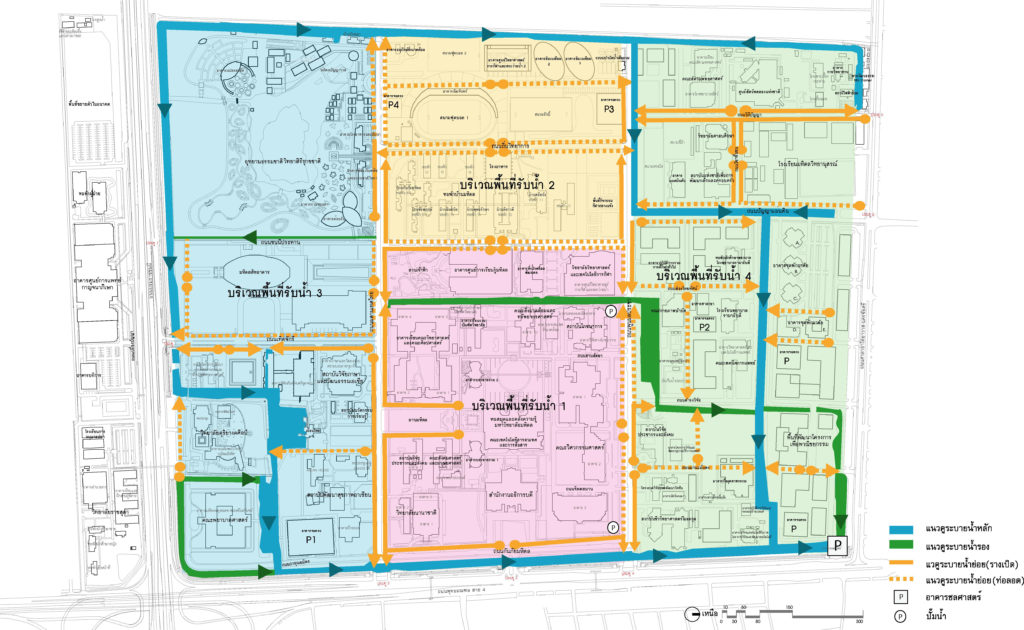
Layout of rainwater drainage system and flood protection system
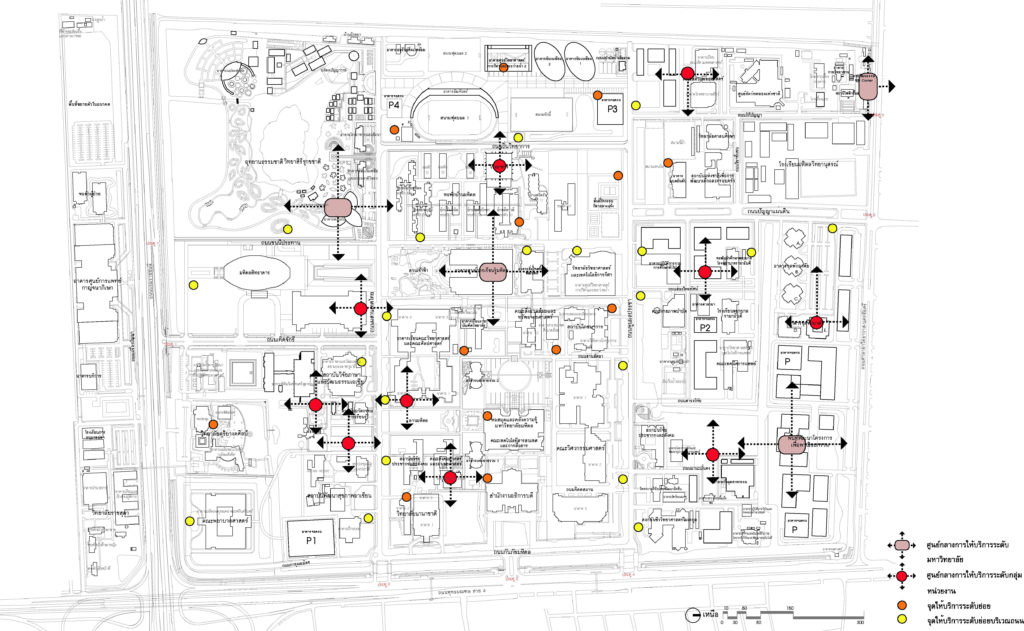
Layout of public service points in the university
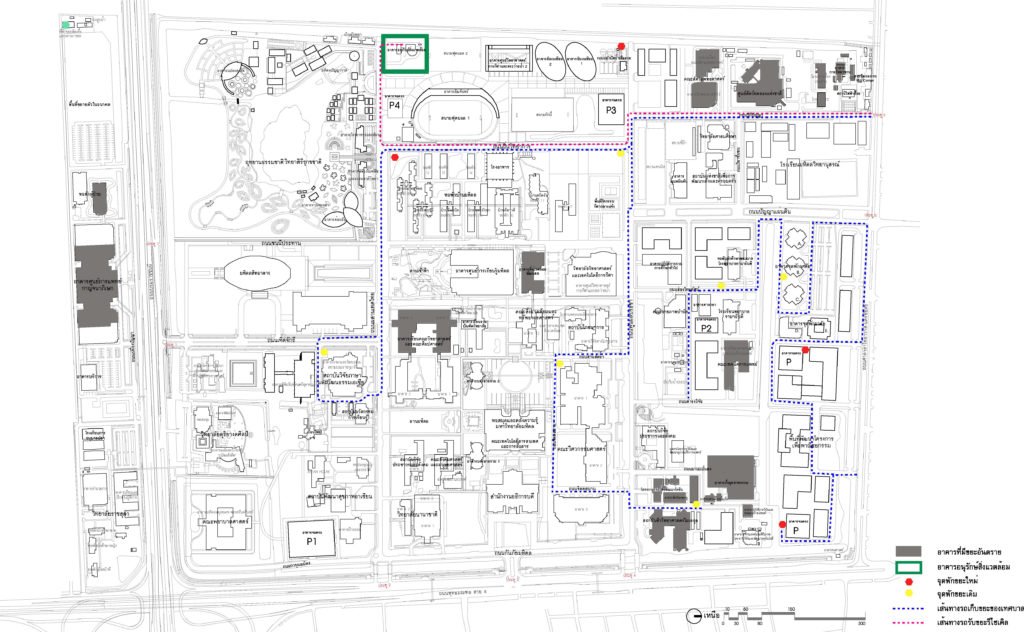
Layout of waste collection routes and waste collecting points
Building and construction control
In order to support the expansion and increase the number of buildings in the future, the planning of building and construction layout is necessary to ensure efficient and appropriate land use. Moreover, the building should be systematically related to beside buildings for beauty and to reduce tight areas. There is a design of entrances and exits to the building, service points, perspective openings, and travelling route from inside to outside of building for connecting with the nature. The criteria for construction and design of buildings in the future are as follows.
1. Building layout
The building style in the future plan has to consider the building layout to use for the building design such as air channel, views, open spaces, and interior design to create a suitable environment for learning and usability.
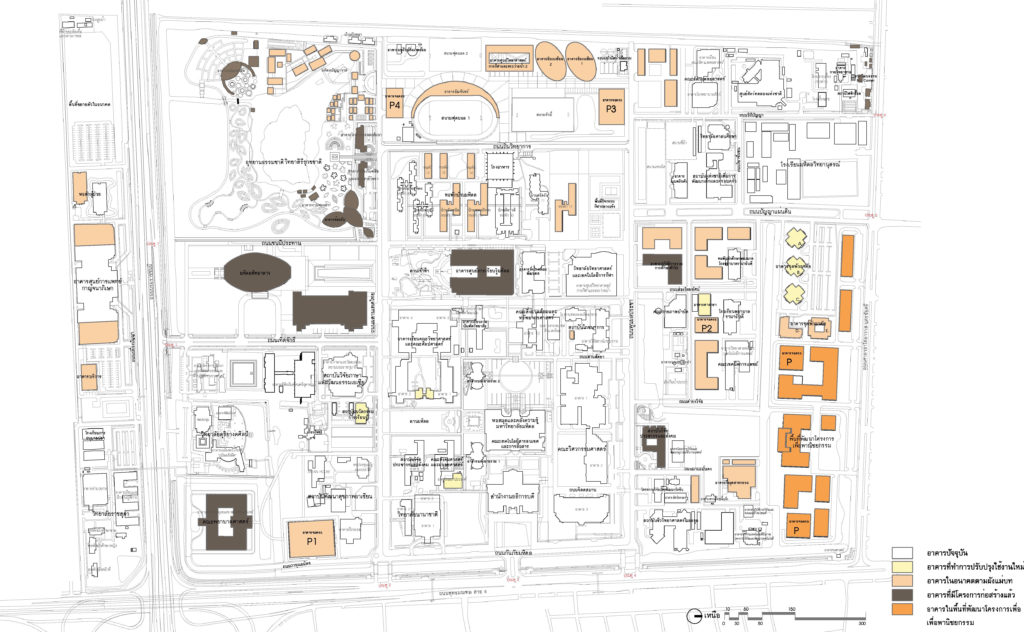
Layout of building construction plan according to the master plan
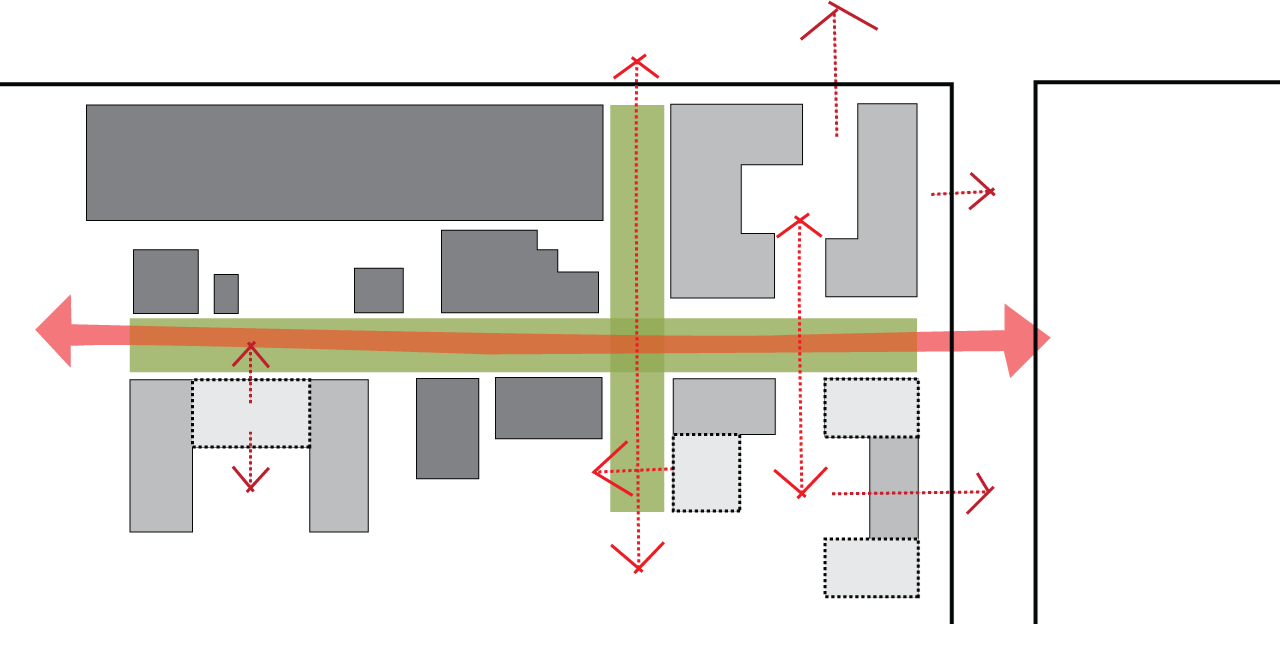
Figure showed the space plan on ground floor of building opening to outside
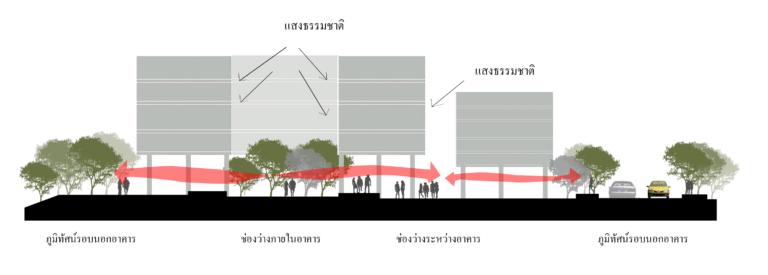
Figure showed the spacing between the building and the surrounding landscape
2. Building Height
Building height is controlled based on the law, area, zoning, and neighbor buildings to prevent problems caused by tall buildings obscuring the scenery of the university.
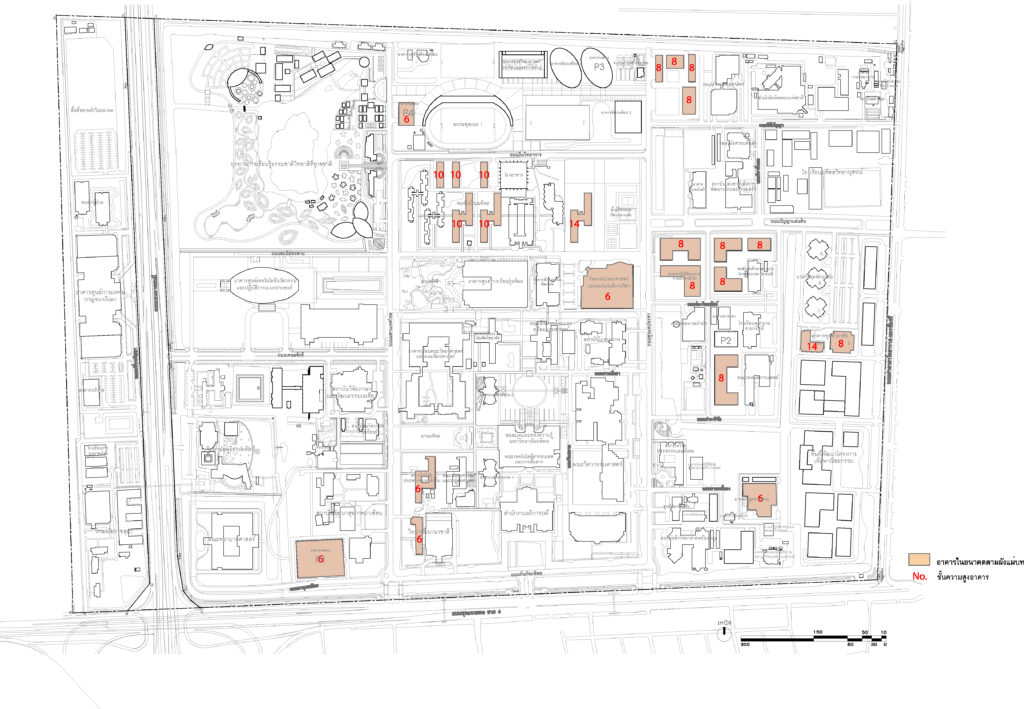
Layout of new buildings which be controlled the height and number of floors according to the master plan
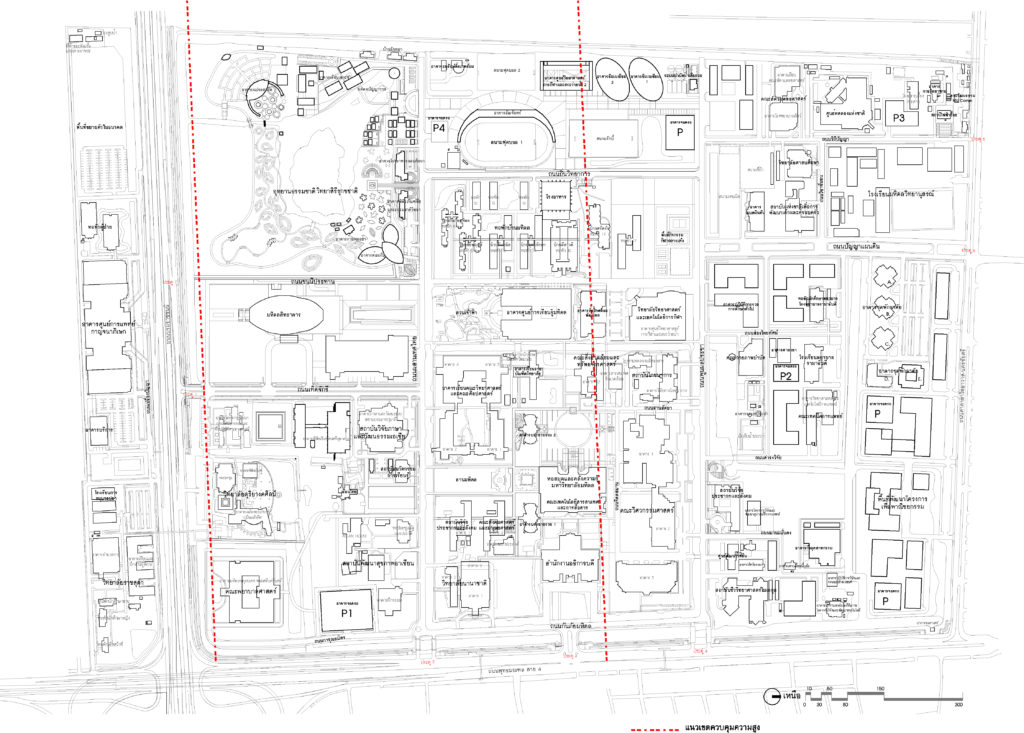
The area of controlled height building in Mahidol University, Salaya, according to the Ministerial Regulation B.E. 2549
3. Side setback of building
Side setback of building has been set to create orderliness of the building line to be continuity with the existing building. That can prevent the problems of building crowed and spacing which can reach natural light, more visual openness, and more activity area.
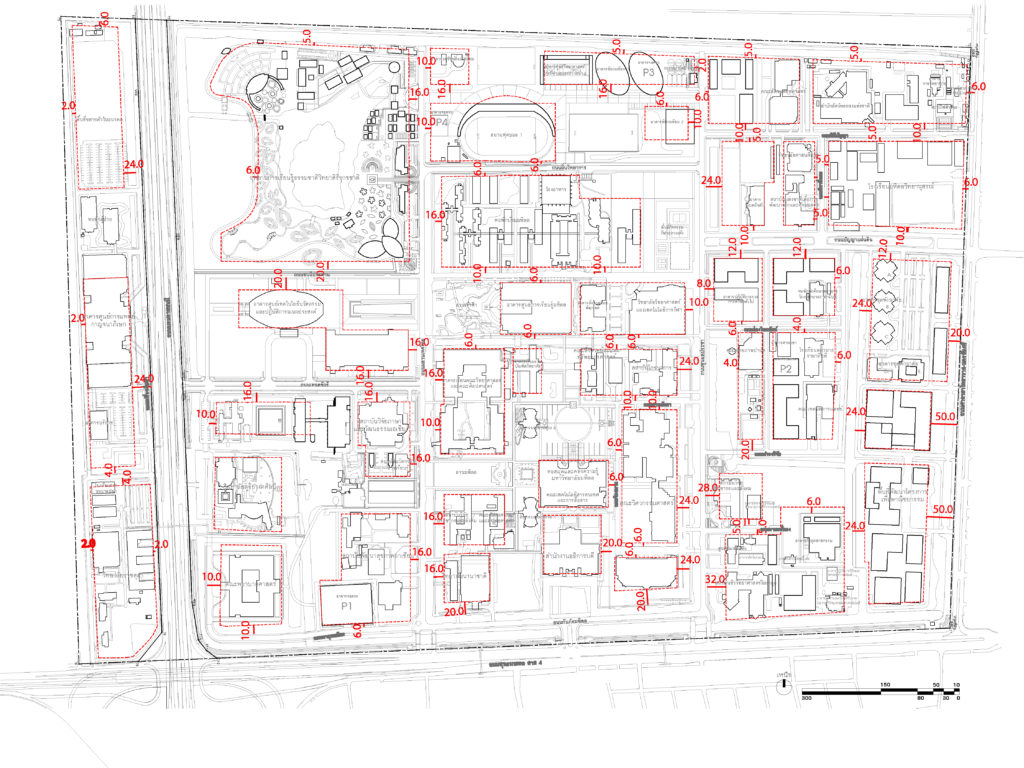
Layout of side setback of building
4. Distance between buildings
Future development and expansion will require more space for building construction. Furthermore, distance between buildings is required for quality environment. Therefore, the distance between buildings should be designed based on activities and desired environmental quality at that area. The distance between buildings should not less than 8 meters.
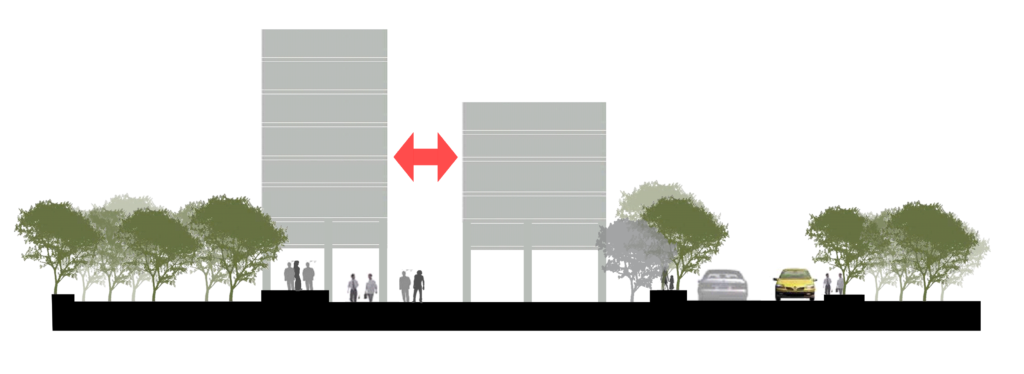
Figure showed distance between buildings
-


